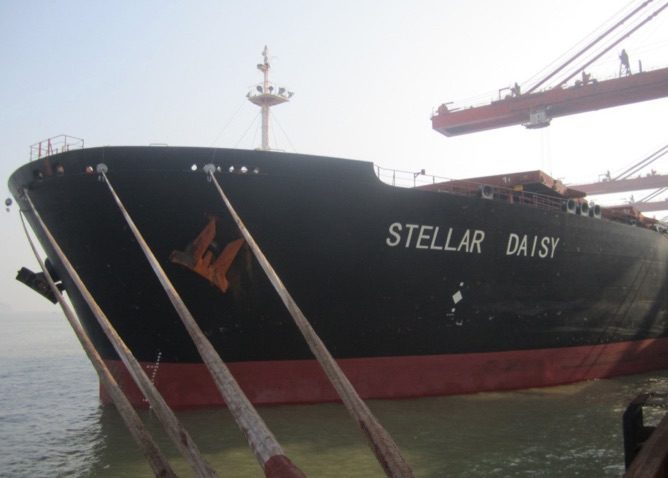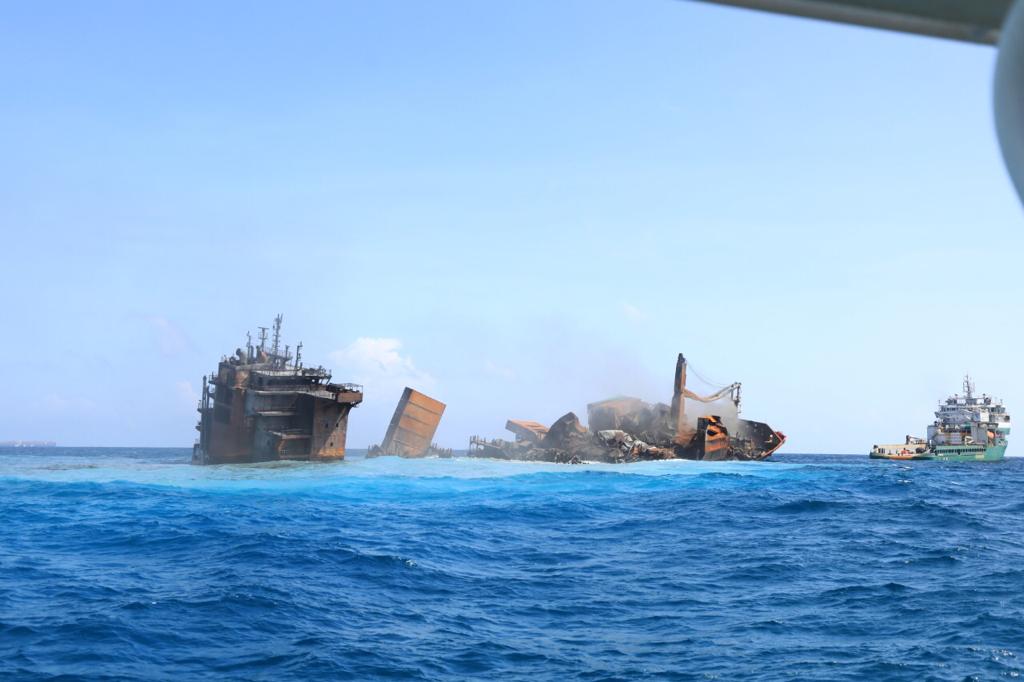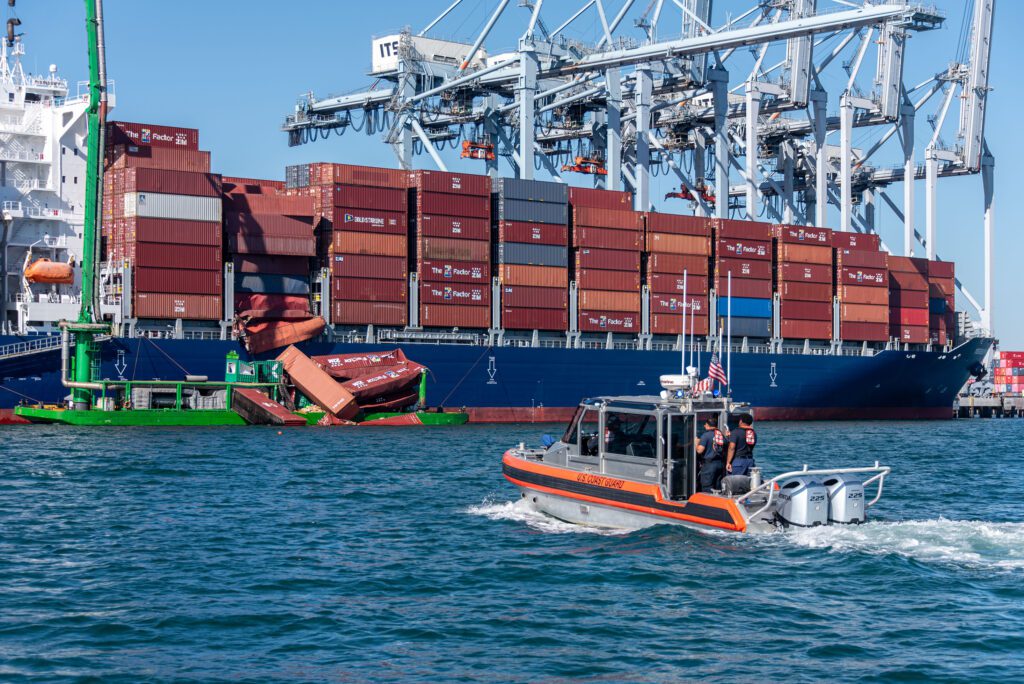Photo courtesy Marshall Islands Maritime Administrator
The Maritime Administrator of the Republic of the Marshall Islands has released its long-awaited report on the investigation into the 2017 loss of the Stellar Daisy in the South Atlantic.
The Marshall Islands-flagged Stellar Daisy, a 266,141 DWT very large ore carrier, sank on March 31, 2017, approximately 1,700 nautical miles from Uruguay while underway from Brazil to China with a cargo of iron ore for Vale. Of the 24 crewmembers on board, only two were rescued. The other 22 are missing and presumed deceased.
The wreck of the vessel was only located last February in 3,461 meters of water.
The investigation determined that the likely direct cause of the foundering was a rapid list to port following a catastrophic structural failure of the ship’s hull that resulted in a loss of buoyancy and uncontrolled flooding.
In its executive summary, the report that the structural damage was likely due to a combination of factors, including “the strength of the ship’s structure being compromised over time due to material fatigue, corrosion, unidentified structural defects, multi-port loading, and the forces imposed on the hull as a result of the weather conditions STELLAR DAISY encountered between 29–31 March 2017.”
The Stellar Daisy was originally built as a 264,165 DWT, single hull, very large crude carrier (VLCC) in 1993, but in 2008 it underwent a major conversion to a Very Large Ore Carrier (VLOC) with design approved by the Korean Register of Shipping. Stellar Daisy was one of 18 converted VLOCs classed by the Korean Register that were managed by Polaris Shipping.
Since the loss of the Stellar Daisy, structural damage has been found on eleven of the converted vessels.
The Marshall Islands’ investigation also concluded that the likely causal factors include:
- the large port and starboard wing tanks increased the potential for a major structural failure and loss of buoyancy in the event that one or more of these tanks flooded while the ship was in a laden condition;
- a gap in the additional safety measures for bulk carriers contained in the International Convention for the Safety of Life at Sea (SOLAS), 1974, Chapter XII, regulation 5 which does not require an assessment to ensure bulk carriers of 150 m or more in length of double-side skin construction, designed to carry solid bulk cargoes with a density of 1,000 kilograms per cubic meter (kg/m3) and above, constructed on or after 1 July 2006 with any part of the longitudinal bulkhead located within B/5 or 11.5 m, whichever is less, inboard from the ship’s side at a right angle to the centerline at the assigned summer load line can withstand the flooding of any one wing tank in all loading and ballast conditions; and
- ineffective assessments of structural damage identified when the ship was in dry dock in 2011, 2012, and 2015 which failed to determine the cause of the structural damage, identify any potential defects with the conversion design, or require the development of appropriate repair plans.
The report recommended several actions be taken by Polaris Shipping, the Korean Register, and the Marshall Islands Maritime Administration.
We encourage you to read the full 83-page report here: https://www.register-iri.com/wp-content/uploads/Republic-of-the-Marshall-Islands-Office-of-the-Maritime-Administrator-STELLAR-DAISY-Casualty-Investigation-Report.pdf

 Join The Club
Join The Club











